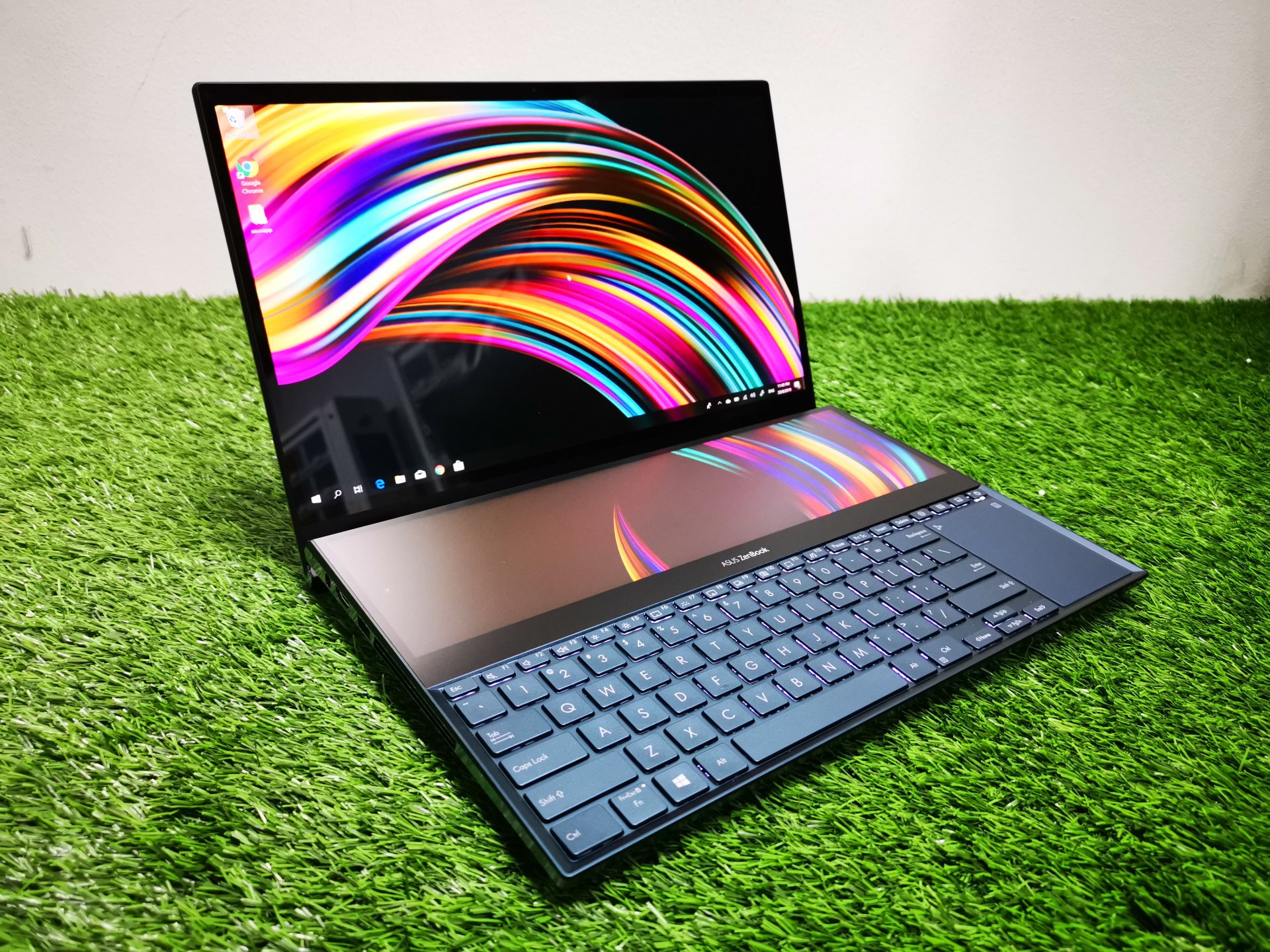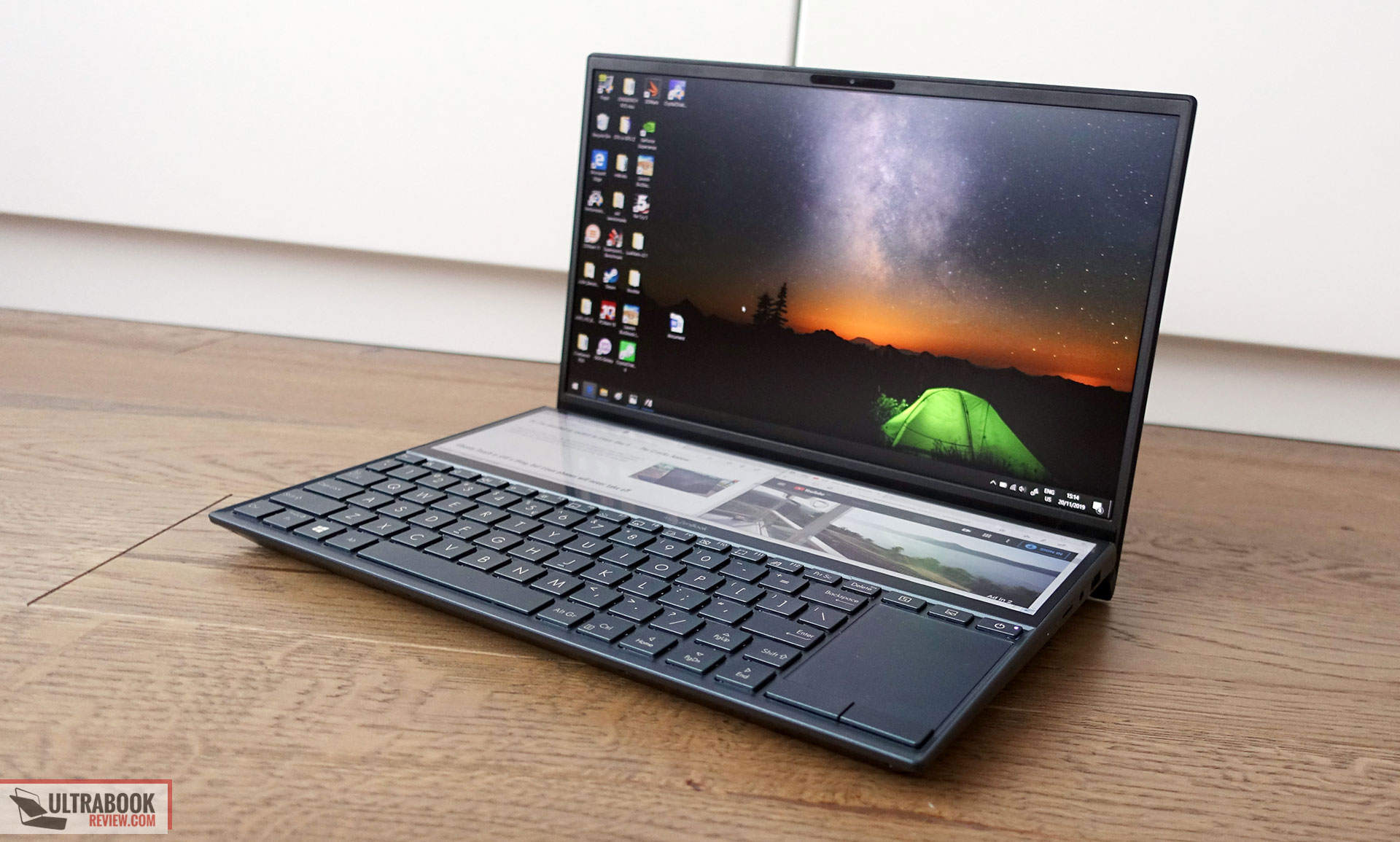
This is completely harmless and normal, and will not affect the normal operation of your device.
#Zenbook duo pro
#Zenbook duo windows
You should also ensure that you have an animated, dark-background screensaver enabled in the Windows Settings tool. We also recommended adjust the brightness of your OLED display to complement the ambient lighting in your environment, rather than keeping the screen at maximum brightness at all times. This dual approach minimizes the potential for burn-in to maximize the lifespan of your OLED display lifespan, and also reduces unnecessary power draw for optimal battery life. ASUS laptops with an OLED display minimize this risk by setting Windows’s Dark mode as default, as well as shortening the idle time before the screen is turned off - both on mains (AC) and battery (DC) power. This tends to occur only in extreme use cases, such as when a static, high-contrast image is continuously displayed for prolonged periods of time. This is expected behavior that can include image persistence or burn-in, where the display shows a faint remnant of an image even after a new image appears on the screen.


It also has a downward-shining light for conveying Alexa status that gives it an extra edge of cool. Given how thick it is, it's also disappointing that it lacks a wired Ethernet jack. Not an anchor, but not the thin-and-light devices a lot of people want. While a lot of Asus's ZenBooks are light and thin, this one has more in common with the company's Republic of Gamers gaming laptops. Asus' recommended brightness when working on battery is 40%, which is definitely too dim.

Consider my results a work in progress.) I think it uses the same touch overlay as the HP Spectre x360, because it has the same grainy look up close, and like that system it supports Windows HDR for everything. (It's listed as DisplayHDR 500 True Black compliant, so I'm not entirely confident of my peak brightness result of 416 nits for a 10% window.
#Zenbook duo full
It's slightly dimmer than the others at a peak full-screen brightness of about 356 nits, but offers the same full P3 gamut coverage - only 93% of Adobe RGB, though.
#Zenbook duo software
The OLED screen is Pantone Validated - it comes with two undocumented software profiles - and uses the same Samsung panel as all the current models. On the other hand, it's nice for the occasional digital signature. It's not so much for artistry as for annotation and notetaking, but I still found it a little awkwardly placed for that. The secondary display supports basic pressure-sensitivity, 1,024 levels, and comes bundled with a battery-driven stylus.
#Zenbook duo plus
Like the HP's, Asus' Screen Pad Plus works much like a standalone second display, and both of the displays have touchscreens, which is nice.

These small screens like the half-height one on the ZenBook and the tiny one on the HP Omen X 2S aren't quite as nice as having a big second screen - except when you don't have room for a full-size monitor. You're not constantly juggling windows, and you can put boring meetings to the side while you keep working on more interesting stuff. It's like moving from a tiny apartment to a house. Having multiple monitors makes working and playing so much more pleasant.


 0 kommentar(er)
0 kommentar(er)
